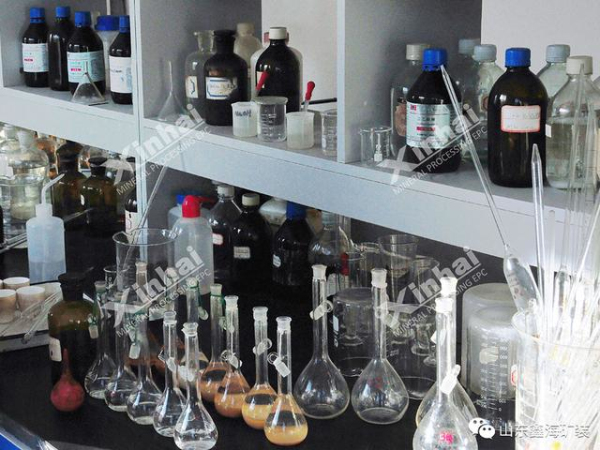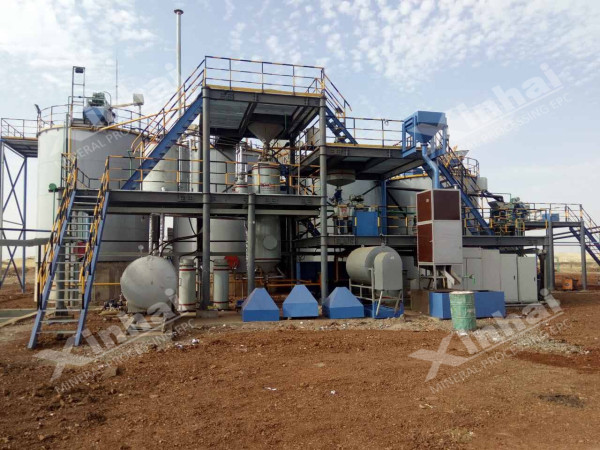Antimony gold ore is an important part of gold resources but a kind of refractory gold ore, so the treatment method of antimony gold ore is always a difficult subject to overcome. The three methods of gold extraction from antimony gold are flotation method, pre-treatment method and enhanced leaching method. In fact, when the right method is selected, gold extraction from antimony gold ore is also very simple.
Antimony gold ore flotation method is mostly used to process ores whose antimony minerals are not the carrier minerals of gold. Its essence is the flotation separation of antimony minerals and gold-carrying minerals such as sulfur and arsenic, which can avoid complex pretreatment process and obtain by-product of antimony concentrates. This process has relatively low cost, but it is difficult to operate. It is necessary to reduce the entrainment of gold as much as possible while ensuring the flotation index of antimony concentrate. Generally, the flotation method of antimony gold ore can be divided into mixed flotation and preferential flotation.

Mixed flotation
The mixed flotation process is relatively simple, but it is difficult to suppress gold-carrying minerals such as sulfur and arsenic that have floated up, resulting in some sulfur, arsenic and other minerals mixed into the antimony concentrate. It will affect the quality of the antimony concentrate, and also causing gold loss in antimony concentrate.
Preferential flotation
In principle, the preferential flotation method can be divided into two processes: preferential flotation of gold-carrying minerals such as arsenic and sulfur, and preferential flotation of antimony. However, in the preferential flotation of arsenic and sulfur, some antimony minerals with better floatability will float together, resulting in a large loss of antimony in gold concentrate, which increase the investment cost and unfriendly to the environment. Therefore, most antimony gold ore flotation plants often adopt the preferential flotation antimony process. The key to this process is the efficient collection of antimony minerals and the effective suppression of gold-loaded minerals such as arsenic and sulfur.
When the grade of antimony in the raw ore is low and has no recycling value or gold is present in antimony minerals, it is difficult to eliminate the influence of antimony by flotation. In order to improve the cyanidation leaching environment of antimony-containing gold ores, physical or chemical pretreatment can be used before leaching to achieve efficient gold leaching. Common antimony gold ore pretreatment methods mainly include roasting method and chemical alkali leaching method.

Roasting method
Roasting method is a common method for oxidative pretreatment of antimony-containing gold ore. The physical structure of the ore is changed by roasting to produce loose and porous calcine. and the adverse effects of stibnite. The antimony-containing gold ore has a high leaching rate and mature technology, but the co-associated arsenic, sulfur and other minerals will cause environmental pollution problems, which need to be reprocessed, and the energy consumption and electricity consumption are relatively large.
Chemical alkali leaching
The chemical alkaline leaching method is mostly used for the treatment of gold-antimony ore with stibnite as the main gold-carrying mineral. This method utilizes the characteristic that antimony minerals are well soluble in alkali or sodium sulfide, and the other products are removed in advance by washing with water t to avoid the occurrence of cyanide-consuming and oxygen-consuming reactions during subsequent cyanidation leaching, and at the same time, the secondary coverage of NaCNS and other products is significantly weakened. Compared with the roasting method, the cyanidation leaching rate of the chemical alkali leaching method will be lower, and it has a limited application range. However, it has other merits like fast reaction, short recovery cycle, less pollution, and low cost.

The enhanced leaching method of antimony gold ore is mainly used in the cyanidation leaching stage of antimony gold ore. On the one hand, by adding leaching aids such as lead acetate and lead nitrate, the occurrence of cyanide consumption and oxygen consumption reaction of antimony in the cyanide leaching system is inhibited and avoid secondary coverage of gold particles by its reaction products; on the other hand, by adding oxidants such as potassium permanganate to accelerate the oxidation of stibnite to generate antimonate, destroy the peripheral coating of gold, and at the same time improve the gold cyanide leaching reaction activity, speed up leaching speed. The enhanced leaching method does not require pretreatment of the raw ore, and can speed up the leaching rate and improve the leaching efficiency. But it is not suitable for antimony-gold ores with serious gangue encapsulation.
In a word, the difficulty of separating antimony-containing gold ore not only lies in the encapsulation of gold by antimony minerals (the treatment method of encapsulated gold), but also in the stibnite consumes cyanide and oxygen during leaching. For different properties of antimony gold ore, different extraction methods should be used for recovery. For refractory gold ores, beneficiation tests must be carried out first. Only after a comprehensive understanding of the ore properties by the beneficiation test, can the scientific and reasonable antimony gold beneficiation methods and equipment be selected.